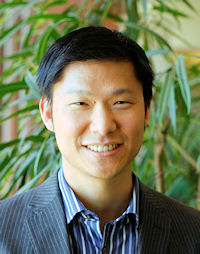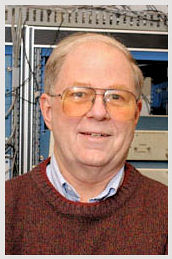Monday, May 11, 2009, 6:00 – 9:00 pm
Dinner: 6:00 – 8:00 pm, Vista Terrace and Sunset Deck
Demos: 7:00 – 9:00 pm, Royal Palm Ballroom 4-5 Ballroom and Acacia Meeting Rooms
Please join us Monday evening for the 7th Annual VSS Demo Night, a spectacular night of imaginative demos solicited from VSS members, delectable food, and social interaction. This year’s dinner theme is Caribbean Night!
The demos highlight the important role of visual displays in vision research and education. This year, Arthur Shapiro and Bart Anderson are co-curators for Demo Night, and Gideon Caplovitz is assistant curator.
The Caribbean-themed buffet dinner will be held on the Sunset Terrace and Vista Deck overlooking the Naples Grande main pool. Demos will be located upstairs on the ballroom level in the Royal 4-5 Ballroom and Acacia Meeting Rooms.
Demo Night is free for all registered VSS attendees. Meal tickets are not required, but you must wear your VSS badge for entry to the Dinner Buffet. Guests and family members of all ages are welcome to attend the demos, but must purchase a ticket for dinner. You can register your guests at any time during the meeting at the VSS Registration Desk located in the Royal Ballroom foyer. At 6:00 pm Monday, a desk will also be set up at the entrance to the dinner in the Vista Ballroom.
Guest prices: Adults: $25, Youth (6-12 years old): $10, Children under 6: free
Immersive Virtual Reality
Bryce Armstrong, Edzard Ulrichs and Matthias Pusch; WorldViz
We will use a 6DOF tracked environment to immerse users in virtual environments. Our goal is to show some of the VSS members experiments to demonstrate the relevance of using VR for vision science research.
Unbound Rivalry
Derek Arnold, Holly Erskine, Warrick Roseboom and Tom Wallis; The University of Queensland
We will demonstrate that exposure to a coherent moving stimulus can induce a dynamic competition for perceptual dominance involving illusory forms signaled by motion streaks and direction-sensitive mechanisms.
LITE Vision Demonstrations
Kenneth Brecher; Boston University
I will present the most recent Project LITE vision demonstrations (including ones not yet posted on the web) – both computer software and new physical objects.
The Bar Cross Ellipse Illusion
Gideon Caplovitz and Peter Tse; Princeton University and Dartmouth College
A quad-stable stimulus leading to drastically different percepts based on differential figure-ground segmentation, assignment and integration of motion sources.
Bypassing V1: Motion through depth from monocular pattern motions
Thaddeus B. Czuba, Bas Rokers, Lawrence K. Cormack and Alex C. Huk; The University of Texas at Austin
We show that percepts of motion through depth are supported by stimuli that effectively bypass significant binocular processing in primary visual cortex (V1).
Helmholtz/Zanforlin illusion
Peter Thompson and Rob Stone; University of York
Asked to make a pile of coins as high as it is wide, subjects make it up to 30% too low. Simple demo with no computer! Interactive for subject. Cheap.
Perceptual Conduits for Attentional Flow: Contour Interpolation Exerts Automatic Effects on Multiple Object Tracking
Brian P. Keane, Everett Mettler, Vicky Tsoi and Phil J. Kellman; UCLA
We explore multiple object tracking in which moving items do or do not form interpolated connections with one another. Our demonstrations show that the ability to track clearly depends on interpolation.
Subjective disappearance of targets induced by flickering illumination
Sung-Ho Kim; Rutgers University
Under flickering illumination, peripherally presented target lines or dots disappear.
Failure of slope constancy
Zhi Li and Frank Durgin; Swarthmore College
Viewed from the top, the downward slope of a hill or ramp appears shallower when standing at the edge and steeper when standing back from the edge. The surface can appear to rotate upward as the observer approaches it.
Growing and Shrinking: The Body-Based Rescaling of Apparent Size
Sally Linkenauger and Jessica Witt; University of Virginia
We will demonstrate that apparent size is judged relative to one’s body. Using magnification and minification goggles, we will show this using a newly discovered visual illusion to disrupt the relationship between physical object size and body size.
Marilyn-go-round: the moving hybrid-image
Takao Sato and Kenchi Hosokawa; University of Tokyo
Hybrid-images combine high and low spatial frequency components from two separate images. We remove the low spatial frequency content from hypbrid images by spinning them along a curved orbit. The demo is interactive and amusing.
Motion induces overestimation (MIO)
Maryam Vaziri Pashkam and Arash Afraz; Harvard University
We will demonstrate the motion-induced overestimation illusion. On a rotating spoked disk,as the rotation speed increases, the perceived number of spokes increases.
Binocular shape, unlike binocular space, is perceived veridically
Tadamasa Sawada, Yunfeng Li, Zygmunt Pizlo and Robert M. Steinman; Purdue University
It is widely believed that binocular space perception is inaccurate and unreliable. We will show that this applies only to depth perception, not to the perception of complex 3D shapes. The geometry responsible for this useful accomplishment will be explained.
Dynamic Object Formation: Perceptual Reality Combines the Visible and Recently Visible
Tandra Ghose, Evan Palmer, Brian P. Keane and Phil J. Kellman, UCLA
We demonstrate perceptual completion in dynamically occluded and illusory stimuli. We explore the conditions favoring spatiotemporal completion and demonstrate the effects of component processes leading to object formation, including illusions resulting from non-veridical updating of occluded object position.
The break of the curveball, rolling rolls, and other illusions
Arthur Shapiro; American University
I will demonstrate new visual effects involving “rotation from shading,” differences between peripheral and foveal processing, and a variant of hybrid images.
Smooth pursuit suppresses motion processing
Peter Tse; Dartmouth College
When smoothly pursuing a moving fixation spot, real motion in the background is suppressed.
Slant stereomotion from modulation of interocular spatial frequency difference
Christopher Tyler and Lora Likova; Smith-Kettlewell Eye Research Institute
If gratings are presented with an interocular spatial-frequency difference (ISFD), modulating the ISFD over time generates strong percepts of slant stereomotion, even when orientation or velocity differences exclude the use of conventional binocular disparity cues.


